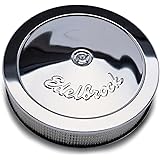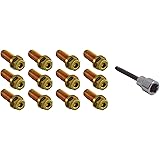===INTRO:===
Borla 140085 Cat-Back Exhaust System (40085)
$143.92 (as of 10/18/2024 06:27 GMT -07:00 - More infoProduct prices and availability are accurate as of the date/time indicated and are subject to change. Any price and availability information displayed on [relevant Amazon Site(s), as applicable] at the time of purchase will apply to the purchase of this product.)Edelbrock 1221 Signature Series Air Cleaner
$55.94 (as of 10/18/2024 06:27 GMT -07:00 - More infoProduct prices and availability are accurate as of the date/time indicated and are subject to change. Any price and availability information displayed on [relevant Amazon Site(s), as applicable] at the time of purchase will apply to the purchase of this product.)Walker 41726 Exhaust Pipe 3" Inlet (ID) 2.5" Outlet (ID)
$20.79 (as of 10/18/2024 06:27 GMT -07:00 - More infoProduct prices and availability are accurate as of the date/time indicated and are subject to change. Any price and availability information displayed on [relevant Amazon Site(s), as applicable] at the time of purchase will apply to the purchase of this product.)NGK SPARK PLUGS (USA),INC. (3346) BR7EF V-Power Spark Plug, Pack of 1
$3.84 (as of 10/18/2024 06:27 GMT -07:00 - More infoProduct prices and availability are accurate as of the date/time indicated and are subject to change. Any price and availability information displayed on [relevant Amazon Site(s), as applicable] at the time of purchase will apply to the purchase of this product.)Skunk2 Racing 413-05-6005 MegaPower RR Exhaust System for 2002-2006 Acura RSX
$598.06 (as of 10/18/2024 06:27 GMT -07:00 - More infoProduct prices and availability are accurate as of the date/time indicated and are subject to change. Any price and availability information displayed on [relevant Amazon Site(s), as applicable] at the time of purchase will apply to the purchase of this product.)Spectre Performance SPE-46723 46723 7/8" Header Bolt
$14.99 (as of 10/18/2024 06:27 GMT -07:00 - More infoProduct prices and availability are accurate as of the date/time indicated and are subject to change. Any price and availability information displayed on [relevant Amazon Site(s), as applicable] at the time of purchase will apply to the purchase of this product.)Upgrading vehicle components is a thrilling way to enhance performance and unleash the true potential of a car. When it comes to the 2012 Nissan GT-R, one popular modification is upgrading the throttle body. But what exactly is a throttle body upgrade, and what impact does it have on the vehicle’s performance? In this article, we will explore the benefits of upgrading to a larger throttle body, the performance gains that can be expected, whether it improves fuel efficiency, installation in a 2012 Nissan GT-R, and debunk some common myths surrounding this modification.
What is a throttle body upgrade?
The throttle body is an essential component in the air intake system of a car. It controls the amount of air entering the engine, allowing it to mix with fuel for combustion. Upgrading the throttle body involves replacing the stock unit with a larger, more efficient one. A larger throttle body typically features a wider diameter, allowing for increased airflow to the engine. This modification is especially popular among performance enthusiasts looking to maximize their car’s power output.
Benefits of upgrading to a larger throttle body
One of the primary benefits of upgrading to a larger throttle body is improved throttle response. With the larger diameter, the engine can breathe more easily, resulting in quicker acceleration and sharper throttle inputs. This enhanced responsiveness can make a significant difference, especially in high-performance vehicles like the GT-R.
Another advantage is increased airflow to the engine. The larger throttle body allows for an increased volume of air to enter the combustion chamber, enabling the engine to generate more power. This additional power can be particularly noticeable in higher RPM ranges and during heavy acceleration.
Furthermore, upgrading to a larger throttle body can also lead to improved engine efficiency. With a higher volume of air available, the engine can operate more efficiently, resulting in potentially improved fuel combustion and reduced emissions. This benefit is especially valuable for those seeking a balance between power and fuel economy.
Performance gains with a bigger throttle body
When it comes to performance gains, upgrading to a larger throttle body can unlock a notable boost in power. The increased airflow allows the engine to breathe more freely, resulting in improved horsepower and torque numbers. This additional performance can be especially noticeable in the mid to high RPM range, providing a thrilling driving experience.
Moreover, a larger throttle body can also enhance the vehicle’s top-end speed. By allowing more air into the engine, it can rev higher and sustain power output for longer durations. This can be advantageous for track days or spirited driving, where reaching higher speeds quickly is desired.
Does a larger throttle body improve fuel efficiency?
While upgrading to a larger throttle body can enhance performance, whether it improves fuel efficiency is a more nuanced question. On one hand, the increased airflow and improved combustion efficiency can potentially lead to better fuel economy. However, the added power produced by the larger throttle body may also tempt the driver to utilize it more frequently, negating any potential fuel savings. Ultimately, the impact on fuel efficiency will depend on driving habits and usage patterns.
Installing a larger throttle body in a 2012 Nissan GT-R
Installing a larger throttle body in a 2012 Nissan GT-R requires some technical knowledge and expertise. It is recommended to consult with a professional mechanic or performance shop experienced with GT-R modifications. The process usually involves removing the stock throttle body and replacing it with the larger unit, ensuring proper fitment and adjustment. Additionally, tuning the engine’s electronic control unit (ECU) may be necessary to optimize performance and ensure proper functionality.
Common myths about upgrading the throttle body
There are several common myths surrounding upgrading the throttle body that should be addressed. One misconception is that simply installing a larger throttle body will guarantee substantial power gains. While it can improve airflow and performance, it is just one piece of the puzzle. Other factors such as exhaust system, intake design, and engine tuning also play crucial roles in maximizing performance gains.
Another myth is that a larger throttle body will lead to decreased low-end power. However, modern throttle body designs are typically optimized to maintain low-end power while still allowing for increased airflow at higher RPMs.
Additionally, some believe that upgrading the throttle body will void the vehicle’s warranty. While it is essential to check with the manufacturer or dealership regarding warranty coverage, many modifications, including throttle body upgrades, can be performed without voiding the warranty if done by reputable professionals and with proper care.
===OUTRO:===
Upgrading to a larger throttle body in a 2012 Nissan GT-R can significantly enhance the driving experience and unlock additional power. The benefits of improved throttle response, increased airflow, and potential fuel efficiency gains make it a tempting modification for performance enthusiasts. However, it is essential to approach this upgrade with proper knowledge and consult professionals to ensure a successful installation. By understanding the impact of upgrading the throttle body and dispelling common myths, GT-R owners can make informed decisions to optimize their car’s performance.





